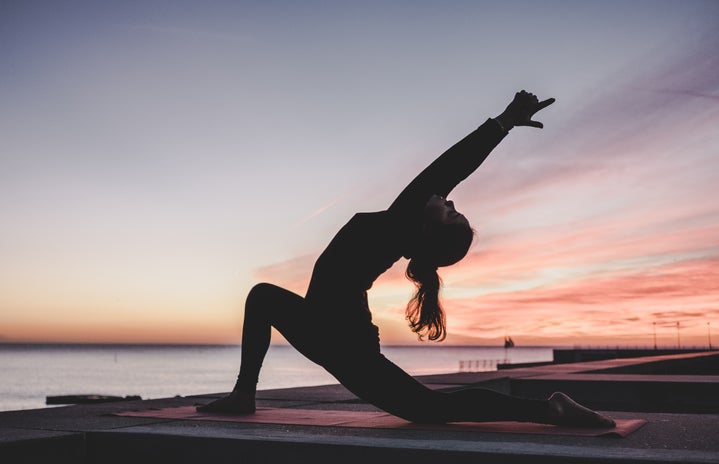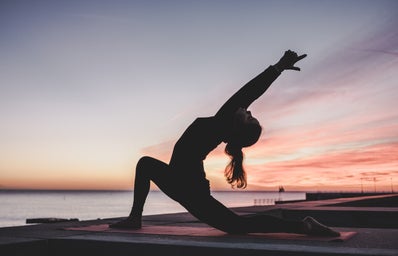The media has crafted an image of the ideal woman. She has “flawless skin, a thin waist, long legs, and well-developed breasts (Groesz).” We see this woman on magazine covers, TV commercials, billboards, social media posts, and your child’s toys. Everyone knows about Barbie, Victoria’s Secret, and the Abercrombie models we love to hate and hate to love. Everywhere we look, we are being told what to look like. As women, we need to be unrealistically thin. What the media doesn’t tell us though, is this “ideal” image is unattainable. Advertisers have photoshopped women to make their waists tinier and their legs longer. Not to mention, the models they are using look nothing like the average woman. They are often underweight and have the luxury of genetics that cause them to look a way that other women never will be able to, no matter how healthy they eat or how often they exercise. Despite it being unattainable, the thin ideal saturates the advertising industry. They have sold us on this “ideal” woman, so much that “both beauty and morality have become equated with greater degrees of thinness, so a “good” girl must be and remain thin (Groesz).” We know we see it everywhere, but how powerful is this thin ideal, really? And, what are the consequences that can come from it? There’s nothing pretty about this battle with beauty standards.
The thin-ideal in advertising has become controversial. Some argue that it is unethical because it causes negative health problems, creates unrealistic expectations through Photoshop, and hurts women through comparison. Others, however, argue that using the thin-ideal in advertising is not unethical because they do not negatively affect all women, are useful for businesses and the economy by spurring sales, and failing to use it could lead to negative health effects, such as increasing obesity rates. Both for and against have valid points, but it is my opinion that using the thin ideal does more harm than good.
According to a study in the Journal of Treatment and Prevention, use of the thin ideal in advertising leads to “increased body dissatisfaction, negative mood states, eating disorder symptoms and decreased self-esteem (Hawkins).” Eating disorders are extremely harmful to women and cause deep psychological and physical consequences. With advertisers constantly putting pressure on women to achieve this “caricature” of an image, women are becoming depressed, upset with their bodies, and more likely to engage in extreme measures that harm their health, confidence, and daily lives (Hawkins).
One of the reasons for these negative effects is that the “ideal” woman is unattainable. She simply doesn’t exist. Photoshopping has become a huge problem in our society. Advertisers are constantly manipulating women’s bodies and proportions to look thinner, better, faker. Thankfully, some celebrities are showing proof of this and speaking out against it. For example, a recent article in Time, notes that famous actresses, Zendaya, Keira Knightly, and Jamie Lee Curtis, have made public statements acknowledging and disapproving of the photoshopping their own bodies underwent without their knowledge. Zendaya said she was “shocked” to find her “19-year-old hips and torso quite manipulated” after posting before and after shots of the same image, showing the discrepancies between the truth and the lie. Kiera Knightley said her image is often “manipulated to make her breasts larger or her body curvier.” She stated that “women’s bodies are a battleground and photography [Photoshop] is partly to blame (Dockterman).” These Photoshop techniques are truly creating a war. A war within ourselves, as women, to be thinner, curvier, longer, shorter, x, y, z. It’s cruel, and it’s not fair. But, how do stop fighting when everywhere we look is another punch in the face of what you don’t have and can’t have and won’t ever have? It’s an impossible win.
The more advertisers glorify the “ideal” woman, the more women will compare themselves to these photoshopped, unrealistic images, and the more they will feel negatively towards themselves when their efforts to look like the “ideal,” inevitably fails. It’s a sad reality, and it’s one we need to change. As a society, we need to discourage advertisers from using these techniques. We need to use our voice and change the course of this battle. Instead of being at war with ourselves and our own bodies, we need to change the enemy. The enemy isn’t our less than perfect bodies. Th enemy is the media, advertisers, and society. A society who glorifies these images, rather than tearing them down. In an era of fake news, it seems we need to change the narrative and focus on fake images, fake bodies. This should be your mission now. It’s time to fight for what we want. It’s time to fight for authenticity. It’s time to fight for imperfection. Let’s glorify that and put an end to this war.



